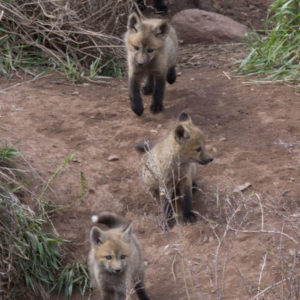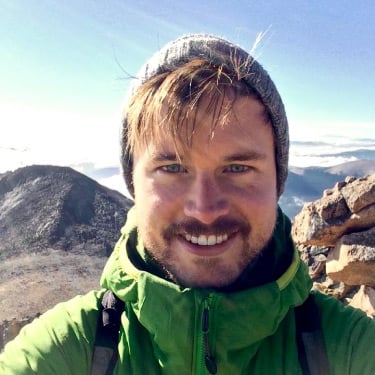
There is no single, correct way to be a mother. You might need to have more control over your child’s activities, or you might feel comfortable being laid-back, or maybe you just leave them in a circle of grass and only check on them twice a day. That last example is really best for rabbits though, so don’t try that technique as a human mother! The best way to be a mother is not about being any one thing in particular – it’s about providing a child with what they need to become independent. Our wildlife neighbors have nearly unlimited techniques for how to be a mother.
Rabbits, mule deer, and other typical prey species try the “hide and seek” technique to hide their young from predators. Young rabbits, deer fawns, and elk calves lie as still and quiet as possible in tall grass. Mother rabbits visit their bunnies only a couple of times a day to nurse their young, thereby minimizing the potential to draw attention to their hiding places. Deer and elk hide their young in tall grasses within 400 feet of free-flowing water. Rabbits, deer, and elk are also important food sources for other wildlife mothers, especially mountain lions.
Mountain lions, black bears, and other large predators tend to keep their young together in a den, preferring the “home base” safety zone method. Dens may be under a rock overhang, in a cave, among dense vegetation, or in trees. For these animals, young are dependent on adults – usually the mothers – to bring them food. As they grow, young will watch and eventually help with hunting prey. These mothers will find any easy prey to feed their young, including rodents, birds, and even people’s pets!
Birds use nests to rear their hatchlings, but nesting strategies vary by the species as well. Some birds nest in trees, some on the ground, and some in riverbanks. Some birds build nests with twigs, some use rocks, and some even use spider silk. Some have one egg, some have several, and some lay their eggs in other species’ nests! Bird mothering techniques are as diverse as those of mammals, reptiles, fishes, and even insects.
Perhaps the most iconic Rocky Mountain wildlife are bighorn sheep. Bighorn sheep mothers utilize “community-based childcare” where lambs and ewes stay together in a group. The lambs will find their mothers for nursing, but most of their time is spent becoming part of the herd. Like many wildlife species in our valley, the available space left for these mothers to raise their young continues to dwindle.
Mothers of all species want the best for their young. They need plenty of food, clean water, safe places for shelter, and enough space to live comfortably. No matter how you raise your young ones, every mother deserves respect for the hard work they put into raising another member of the group. We can respect wildlife mothers at this time of the year by avoiding trails that are closed so that we don’t disturb them. You might get frustrated if you were trying to put your children to bed and someone knocked loudly on the door, or if your child almost took that bite of food when something distracted them. It’s a similar situation for new wildlife mothers: they need privacy and space for raising their young, too. As with every Mothers’ Day, we celebrate the dedication of all mothers, human and wildlife alike.
Nicholas Scarborough is a Foley Graduate Fellow and Educator for Walking Mountains Science Center, working toward his MA in Science Education. In addition to working with children, he also loves to paint, write, hike, and ski. You can find more of his writings about nature and art in his personal blog, The Art Outside, at http://theartoutside.wordpress.com.









